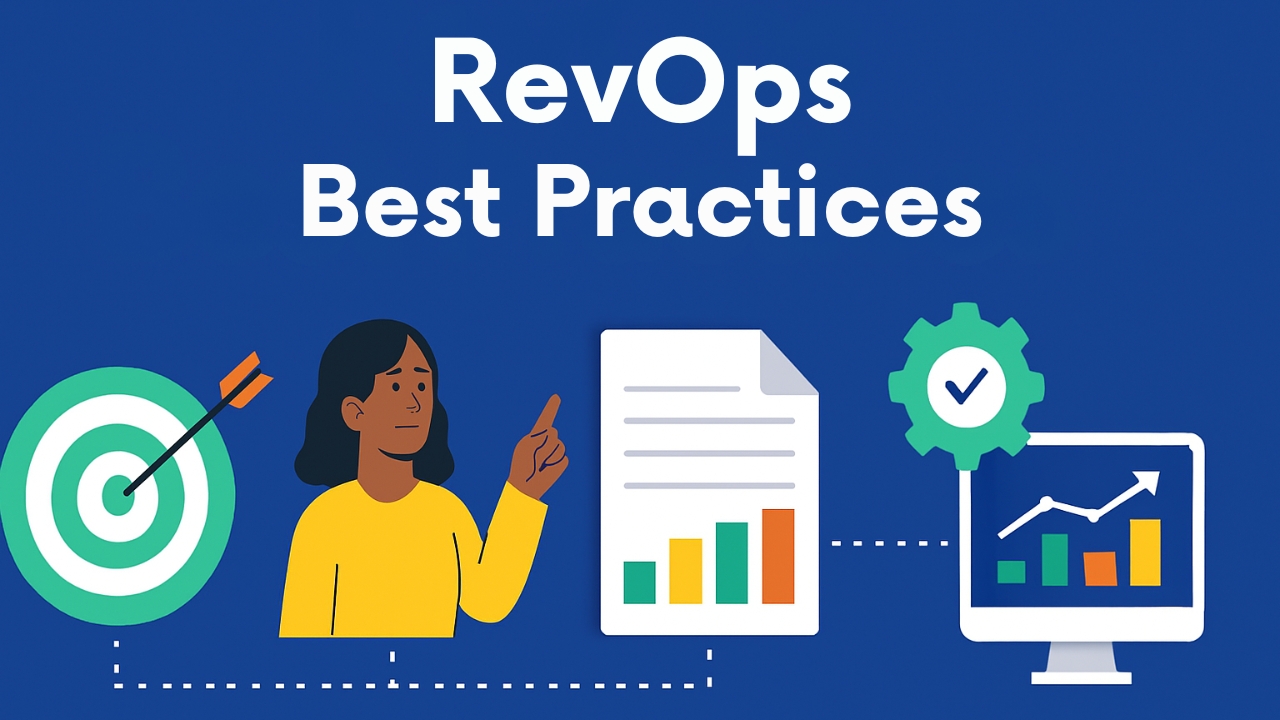To boost revenue growth, the sales, marketing, and customer success teams work together using a strategic method called revenue operations, or RevOps. RevOps best practices not only enhances operational efficiency but also ensures a seamless customer experience by breaking down silos and encouraging better teamwork.
Why RevOps Matters in Modern Business
Businesses today face increasing competition, as well as evolving customer demands that call for sophisticated sales techniques. By using RevOps, companies can improve the effectiveness of their processes that allow the organization to take data-driven decisions, and strengthen customer relations, which drive continuous revenue growth.
Core Pillars of RevOps
Aligning Sales, Marketing, and Customer Success
A well-executed RevOps best practices ensure that sales, marketing, and customer success teams work toward common goals. By aligning objectives, organizations can create a cohesive customer journey and improve overall efficiency.
Data-Driven Decision Making
RevOps relies on real-time data to drive decision-making. Companies can use analytics to identify trends, predict customer behavior, and optimize performance across teams.
Process Optimization Across Departments
Streamlining processes across departments eliminates inefficiencies and enhances collaboration. By standardizing workflows and automation, businesses can improve consistency and accuracy in their operations.
RevOps Best Practices for Growth and Efficiency
Create a Unified Customer Journey Map
Mapping the customer journey helps identify gaps and optimize touchpoints. A well-defined journey enhances engagement and drives conversions.
Standardize Metrics and KPIs Across Teams
Establishing standardized KPIs ensures that all teams work toward the same objectives. Common metrics include Customer Acquisition Cost (CAC), Customer Lifetime Value (CLV), and Net Revenue Retention (NRR).
Implement Regular Cross-Functional Meetings
Regular meetings foster collaboration and transparency. Cross-functional discussions ensure alignment and address potential roadblocks.
Enable Clear Roles and Responsibilities
Defining roles and responsibilities eliminates confusion and enhances accountability. Clear job descriptions and expectations improve efficiency within the RevOps framework.
Building an Effective RevOps Team
Key Roles in a RevOps Team
A strong RevOps team typically includes:
- RevOps Manager
- Sales Operations Specialist
- Marketing Operations Manager
- Data Analyst
- Customer Success Operations Specialist
Skills to Look for in RevOps Talent
Successful RevOps professionals should possess:
- Strong analytical skills
- Technical proficiency with CRM and automation tools
- Strategic thinking and problem-solving abilities
- Excellent communication and collaboration skills
Structuring the Team for Scale
As businesses grow, RevOps teams should be structured for scalability. This includes implementing automation, expanding data analytics capabilities, and refining workflows to accommodate business growth.
RevOps Automation Best Practices
Tools and Technologies for RevOps Automation
Popular RevOps automation tools include:
- HubSpot
- Salesforce
- Marketo
- Outreach
- Clari
Automating Lead Routing and Scoring
Automation ensures leads are assigned to the right sales representatives based on predefined criteria. AI-powered lead scoring helps prioritize high-value opportunities.
CRM Automation and Data Hygiene
Maintaining clean and accurate CRM data is critical. Automating data entry, deduplication, and validation enhances reliability and improves decision-making.
Sales Forecasting Automation
Predictive analytics and AI-driven tools improve the accuracy of sales forecasts, allowing businesses to plan effectively and optimize revenue strategies.
Data and Analytics in RevOps Automation
Real-Time Reporting Dashboards
Dashboards provide instant insights into revenue performance, sales pipeline health, and customer engagement. Real-time analytics help teams make informed decisions.
Using Predictive Analytics to Drive Strategy
Predictive analytics leverage historical data to forecast trends, identify potential churn risks, and optimize revenue generation strategies.
Overcoming Common RevOps Challenges
Breaking Down Silos Between Teams
Encouraging collaboration and shared goals fosters a more integrated approach to revenue generation. Clear communication and centralized data improve team alignment.
Ensuring Data Accuracy and Integration
Data inconsistencies can lead to poor decision-making. Implementing data governance policies and integrating systems helps maintain data integrity.
Avoiding Tool Overload
Overuse of tools can lead to inefficiencies. Companies should give necessary automation solutions top priority and combine systems.
The Future of RevOps and Automation
AI and Machine Learning in RevOps
AI-powered automation improves efficiency by anticipating customer behaviour by personalizing outreach and optimising marketing campaigns.
Evolving Customer Expectations and RevOps Role
As customer expectations evolve, RevOps must adapt by continuously refining strategies, adopting new technologies, and enhancing the overall customer experience.
Conclusion
A crucial role that helps to drive the development of companies by building a better team and streamlining procedures using automation is Revenue Operations (RevOps). As modern businesses evolve, the demand for unified processes and enhanced collaboration between departments such as sales, marketing, and customer success becomes increasingly important. This is where RevOps plays a pivotal role.
At its core, RevOps is about breaking down silos between revenue-generating teams to create a more aligned, efficient, and data-driven approach to business growth. By integrating tools, aligning goals, and centralizing performance data, RevOps ensures that each department works towards common objectives, resulting in better visibility and more consistent decision-making across the organization.
One of the key strengths of a well-implemented RevOps best practices lies in its use of automation. Automating repetitive tasks and standardizing workflows not only increases operational efficiency but also reduces human error and enables teams to focus on strategic initiatives. For instance, automating lead scoring, reporting, and customer onboarding processes frees up valuable time and ensures a smoother customer journey from acquisition to retention.
Following compliance protocols and using automated techniques helps companies not only meet industry standards but also safeguard customer data, which is essential in today’s digital landscape. In addition, by consistently tracking and analyzing performance metrics through RevOps platforms, organizations can identify bottlenecks, forecast revenue more accurately, and make more informed decisions.
Moreover, RevOps enhances the overall customer experience by ensuring that all touchpoints—from marketing campaigns to post-sale support—are cohesive and personalized. This alignment across the customer lifecycle contributes to stronger relationships, higher retention rates, and ultimately, increased revenue.
In summary, Revenue Operations is more than just a back-end function—it is a strategic framework that enables scalable growth, operational excellence, and long-term business success.

